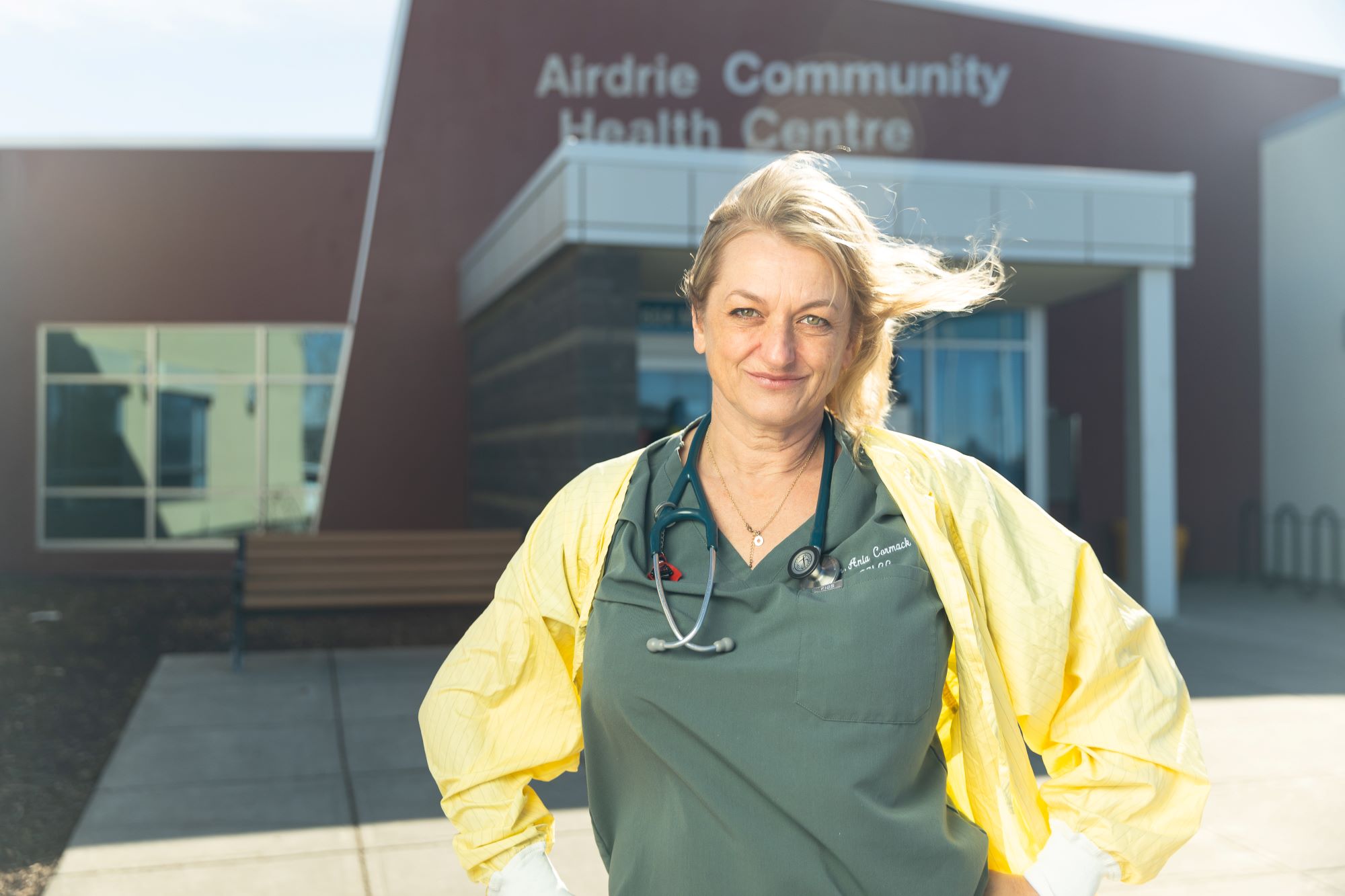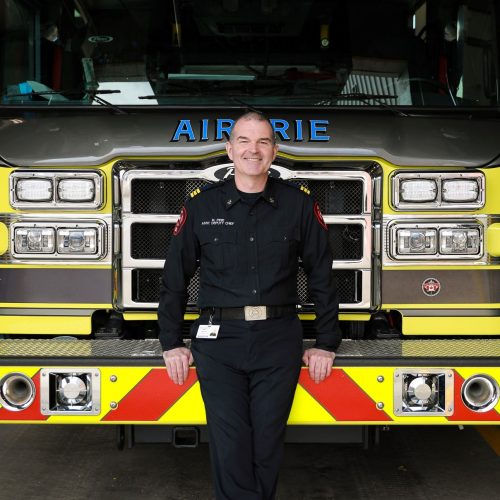It’s shortly after 9 a.m. on a Thursday in late April when Dr. Ania Cormack breezes into the Airdrie Community Health Centre Urgent Care before a day shift.
She doesn’t usually work days, but she is covering a shift for a colleague after just coming off a night shift herself. With a few hours of sleep, she’s back and describes her job as only someone with a passion for their work can.
“I love people,” says Dr. Cormack. “I like havoc and walking in on that and it just kind of makes you float…I don’t get scared. I get excited.”
Dr. Cormack says she’s shy, but you’d never know it in a one-on-one conversation. Despite being the medical site lead for Urgent Care, she doesn’t flaunt her credentials. She loves to alpine climb and the thought of a cruise vacation is hell. Her Harley Davidson is called “Queen Bee.”
She recently took her three kids (two boys and a girl, aged 14, 13 and 11) to Belize, where they lived on a catamaran and “free dove for conch shells and spear fished for our suppers.”
“I’m in a place in my life where life is amazing,” says the 50-year-old doctor.
Being the face of Airdrie’s Urgent Care is something she’s met with open arms. She thrives on the continued challenge of providing the best care she can for people on what could be the worst days of their lives. She empathizes with her patients.
“You come into a system that’s overburdened, people are exhausted,” says Dr. Cormack. “It’s an eight-hour wait because we’re tiny. You interact with folks in a way that you can change people’s energy from the frustration of fear, into ‘We’re in this as a team, that it’s going to be okay.’”
She loves that no shift is ever the same as the last.
“That’s what sets my heart on fire – living slightly a wild-child kind of life. Life is awesome!”
THE MAKING OF A HEALTHCARE HERO
Dr. Ania Cormack was born in Poland, fleeing with her family to England as an eight-year-old in 1981, after the Soviet invasion of her home country. Within a couple of years, she arrived in Canada with her parents and brother.
“Growing up as a refugee is tough,” says Dr. Cormack. “You’re very isolated until you meet your community. I feel like I had parents who struggled hard.”
Her father was a physiotherapist and massage recovery specialist for Olympic sports teams, but being a vocal opposition to the Soviet Union, they were forced to move often, even before they became refugees. Her mother has an archaeology degree and retrained as an accountant in Calgary, with both working two or three minimum-wage jobs to support their family when they moved to Canada.
After high school, Dr. Cormack pursued a biology and zoology degree at the University of Calgary before her medical degree.
“I was fortunate, I loved school,” recalls Dr. Cormack. “I didn’t have any other way to pay for school other than scholarships. So, I got into med school and absolutely loved the program.”
She specialized in family medicine, graduating in 2002 with the goal of working in northern Alberta communities, which she did for about 12 years through the rural locum program.
About 12 years ago, in between shifts away, she began working in Airdrie and Didsbury to be closer to home.
“I turned 50 on a hot air balloon in Arizona,” says Dr. Cormack. “To me, to stay put is really hard. If I’m on the road, I really feel a lot better.”
These days, she spends time thinking about the next stage of life after her “kids get a bit bigger.”
“The next dream is to go and do some adventure medicine,” she says, describing a desire to work in remote places like Alert, Nunavut. “I can’t wait to see what else happens.”





